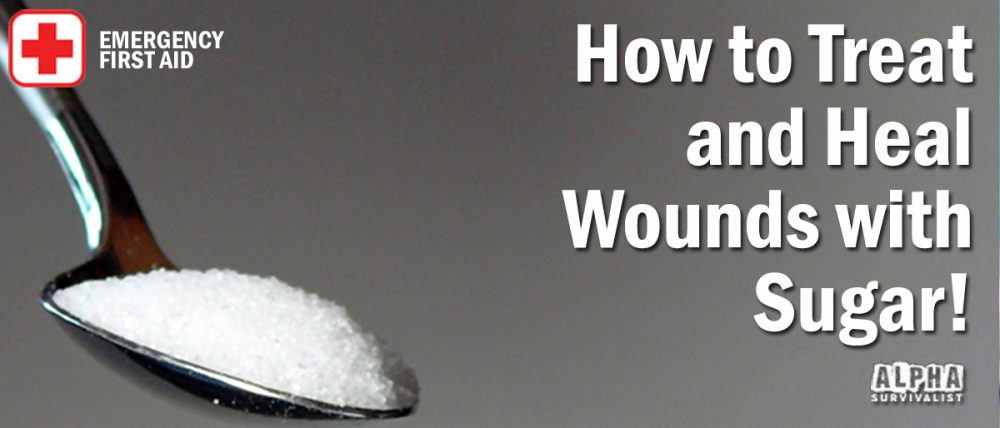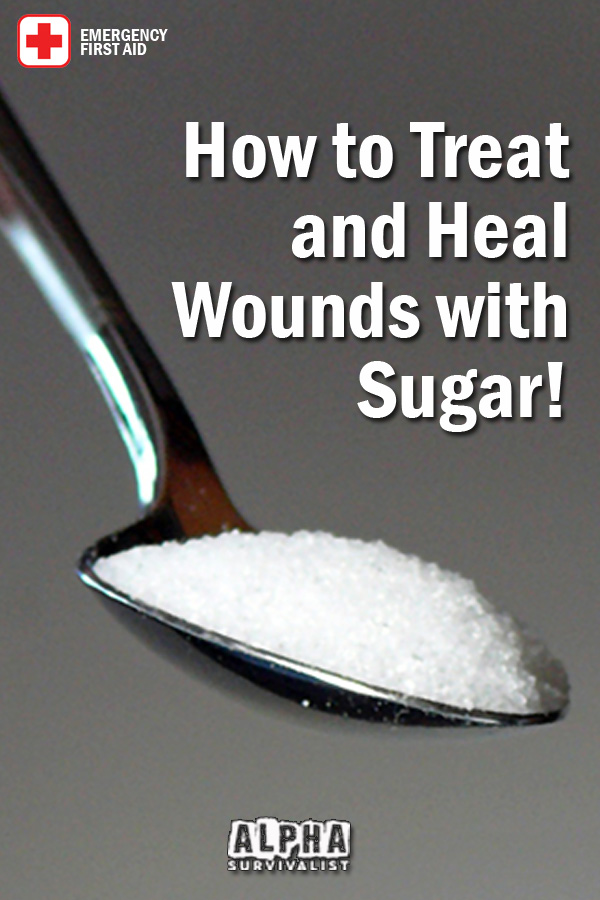In survival situations, treating wounds in an effective and timely manner can be absolutely crucial – and in some cases, it can mean the difference between life and death. Sugar is not something that springs to mind when one thinks about treatments for wounds and is certainly one of the more unlikely candidates, but despite this fact, it’s actually remarkably effective.
Using sugar to treat wounds has been done throughout history with a remarkable level of effectiveness. Sugar can heal wounds remarkably fast, prevent infections, and get you up and running in no time.
How Does Sugar Heal Wounds?
Sugar has a few remarkable properties that makes it an excellent tool for wound healing. First, when applied on a wound, it tends to attract and suck up any water and humidity, ultimately keeping the bed of the wound quite dry – which is essential to prevent the patient from losing too much blood.
Also, infections in wounds are caused by various microorganisms, which are severely dehydrated during the osmotic process that is promoted by sugar. Any bacteria will be left weakened by this process, resulting in a diminished chance of infection.
It’s important to note that using sugar together with honey can be even more effective due to the special glucose oxidase it contains. This substance breaks down sugar into hydrogen peroxide, producing an antiseptic capable of fighting germs even more effectively.
The Advantages of Using Sugar for Wounds
Unlike most types of medicine, sugar can be generally be found in abundance and it’s easy to buy or acquire by just about anyone. In survival situations, the ability to use anything you have lying around can be crucial to your survival, and sugar will almost always be present in the home or in your backpack.
Sugar is also extremely cheap and it can also be used together with other substances to enhance the treatment of wounds and accelerate the healing process. Oil and honey are the main two common household resources you can use with sugar for that purpose.
Mixing sugar with honey creates an ointment, and adds an anti-septic effect, as mentioned earlier. The same thing happens when you use oil, and in that case, “sugar penetration” is also improved, allowing for faster healing results. Adding salve to the wound, along with sugar, will yield the best results when maintaining a loose cover over the wound.
How to Apply Sugar Most Effectively
Applying sugar to a wound can be an extremely simple process. First you have to make sure that the wound has stopped bleeding and that it’s thoroughly cleaned with water. Then, apply sugar granules or a mixture of sugar and oil or honey, and make sure the wound is then covered loosely.
For best results, apply sugar 3-4 times per day, by washing out the wound and renewing the sugar regularly you will be able to make sure that the wound isn’t becoming infected and rapidly increase the healing process.
In SHTF situations, you’ll find sugar to be surprisingly effective, especially as it’s much less difficult to find or buy than antibiotics. The added bonus is that even if you hadn’t prepared for a SHTF situation, you will probably still have sugar around the house to treat wounds quickly and prevent them from becoming a real problem further down the line.
Bottom line. Make sure you have sugar in your survival store and bug out bag, if not for treating wounds it’s a great energy source!


